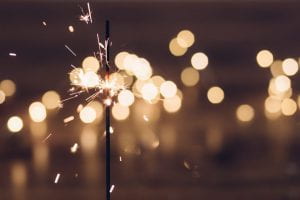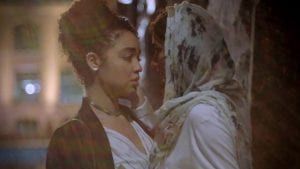While the first season of Orange is the New Black is generally shot in the drab confines of Litchfield Penitentiary, frequent flashbacks spice up the visuals while providing intriguing backstories to many of the prison’s residents.
The show immediately kicks of with a series of quick cuts from a flashback of Piper enjoying getting clean, ending with a jarring closeup of her which eventually zooms out to reveal the confines of prison. Although the show is pretty much entirely shot in third person, the camera follows a variety of perspectives, some with minimal relation to the protagonist. The scenes generally only contain a few characters, but may start with a zoomed out view of many characters (such as in the mess hall), before focusing on the primary character in the scene.
The confines of prison are generally drab, but relatively well lit. There are several scenes that take place at night or in darker environments, such as in the prison theater or late at night in the dorms. There are also a fair number of romantic and sexual scenes, which are shot with much longer takes than other parts of the show. The solitary confinement is shot with an alternating focus on the inmate and the emptiness of their cell, giving the viewer a sense of that character’s isolation. Overall, there are many scenes with one on one interaction where the camera switches perspectives frequently, such as Piper’s meetings with Larry and Healy.
I believe the frequent cuts of the show serve to demonstrate how quickly change can occur in prison, while the longer shots emphasize individual relationships and emotions. The generally uninteresting background draws more focus on the colorful personality of the characters, who keep the prison from becoming too boring. Overall, the producers of the show did an excellent job keeping their shots in tune with the plot of the story, and using visuals to emphasize characters and emotions.
Below, I have linked an article that goes into much more detail on the equipment used in shooting OITNB.





